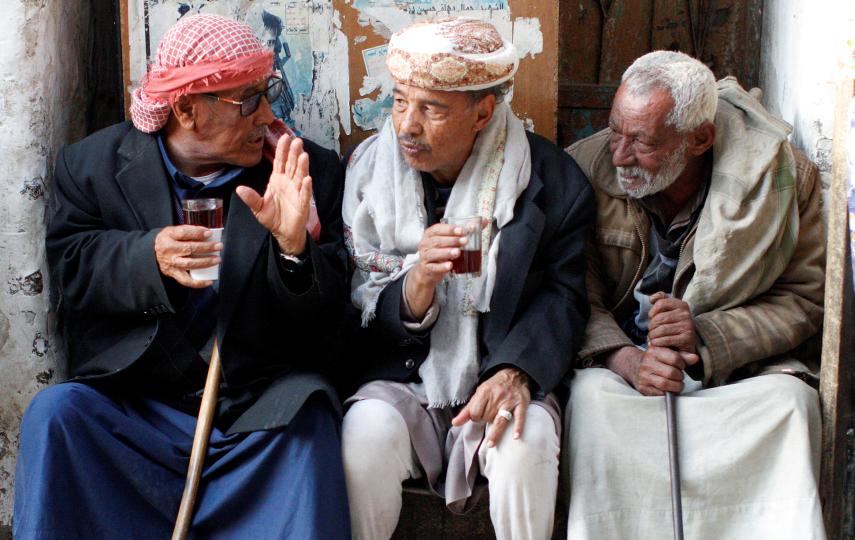The worst drought in 30 years, combined with one of the world's highest HIV rates, has left the mountain kingdom of Lesotho struggling to cope, but there are glimmers of hope as the government and aid agencies come up with innovative responses to the humanitarian crisis.
2007 began with normal rainfall, but then the rain stopped and drought set in. Severe food shortages followed, making it much harder for HIV-positive people on antiretroviral (ARV) drugs to obtain the proper nutrition that is vital to the success of their medication.
About 24,000 people are on ARVs nationwide, including over 1,600 children, but the number is small compared to the total of people living with HIV. UNAIDS estimates that 270,000 people, or 14 percent of the population, are living with HIV.
Andreas Malepe sells straw hats and mats to support her unemployed husband and three children. As she wove straw into Lesotho's well-known conical hats, which she sells on the main street of the capital, Maseru, she admitted that her husband, who was retrenched from a South African mine in 2002, was ill.
She is uncertain whether she is ill herself and is reluctant to take a test, even though her husband has HIV. "The medications they give him will not work unless he has food. We do not have enough food," she told IRIN/PlusNews.
Gwynneth Wong, an AIDS specialist with the United Nations Development Programme (UNDP), said she heard this complaint at community meetings throughout the rural areas. "They say 'give us food and water first, and then we can talk about other matters, like AIDS'."
The response of humanitarian aid organisations has been to launch community service programmes that pay participants with food aid. Most new initiatives government has undertaken with UN agencies have an element of "work for food".
For example, Partners in Health, a US-based medical organisation partnering poor communities to address disease and poverty, pays a cost-of-living stipend to volunteers who are "the eyes and ears of the community", according to country director Dr Jennifer Furin.
Orphans Addressed by Community Action
Community involvement is also the answer to the welfare of around 100,000 children who have lost one or both parents to AIDS. "We are listening to the experts, the people on the ground," said the UNDP's Wong.
Having failed with a "top down" approach to orphan care, the Ministry of Health and Social Welfare is turning the tables by empowering individual community members. Wong coordinates a programme in rural areas that uses "community dialogues" to create AIDS awareness.
"These are very remote communities at the end of roads or where there are no roads. The community conversations are different from where a person is speaking and the others are listening. Rather than shove information down people's throats, the idea is to step back and let people say what their needs are," she said.
Such community conversations have made residents aware of the extent of the orphan population in their areas, and people are now raising food for neighbouring orphans and vulnerable children (OVC).
"We offer technical assistance and small things to get other things moving: gardens, tools. The people feel they are accountable to themselves, and they are not accountable to us. Sure, you can come in and pour a lot of money and have things happen right away, but if you pull out after a year, what happens then?" she said.
Prabhakar Addala, Acting Country Representative for the World Food Programme (WFP) in Lesotho, described another example of the new thinking that has evolved out of past efforts to assist the burgeoning numbers of OVC.
"The issue of feeding OVC is being addressed differently. It used to be that OVC only were given food assistance. This caused some problems, because if they stayed with relatives or they were in foster care, the adults would not give food to them because they were receiving food aid elsewhere, like at community centres, and there was little food in the house to spare."
In 2008, WFP will be introducing take-home family ration boxes for all households caring for orphaned children.
jh/kn/he
This article was produced by IRIN News while it was part of the United Nations Office for the Coordination of Humanitarian Affairs. Please send queries on copyright or liability to the UN. For more information: https://shop.un.org/rights-permissions





